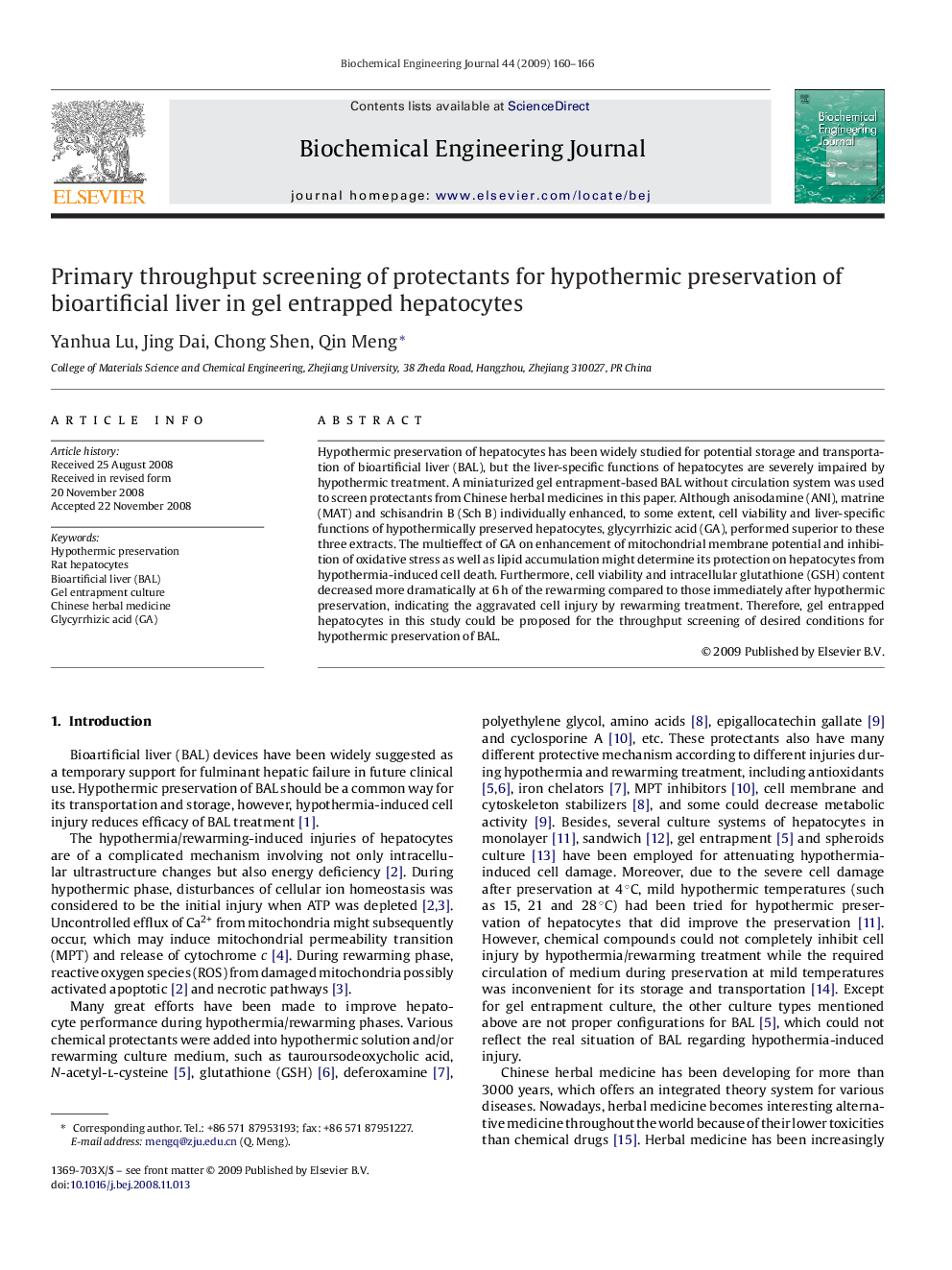| Article ID | Journal | Published Year | Pages | File Type |
|---|---|---|---|---|
| 4264 | Biochemical Engineering Journal | 2009 | 7 Pages |
Hypothermic preservation of hepatocytes has been widely studied for potential storage and transportation of bioartificial liver (BAL), but the liver-specific functions of hepatocytes are severely impaired by hypothermic treatment. A miniaturized gel entrapment-based BAL without circulation system was used to screen protectants from Chinese herbal medicines in this paper. Although anisodamine (ANI), matrine (MAT) and schisandrin B (Sch B) individually enhanced, to some extent, cell viability and liver-specific functions of hypothermically preserved hepatocytes, glycyrrhizic acid (GA), performed superior to these three extracts. The multieffect of GA on enhancement of mitochondrial membrane potential and inhibition of oxidative stress as well as lipid accumulation might determine its protection on hepatocytes from hypothermia-induced cell death. Furthermore, cell viability and intracellular glutathione (GSH) content decreased more dramatically at 6 h of the rewarming compared to those immediately after hypothermic preservation, indicating the aggravated cell injury by rewarming treatment. Therefore, gel entrapped hepatocytes in this study could be proposed for the throughput screening of desired conditions for hypothermic preservation of BAL.
